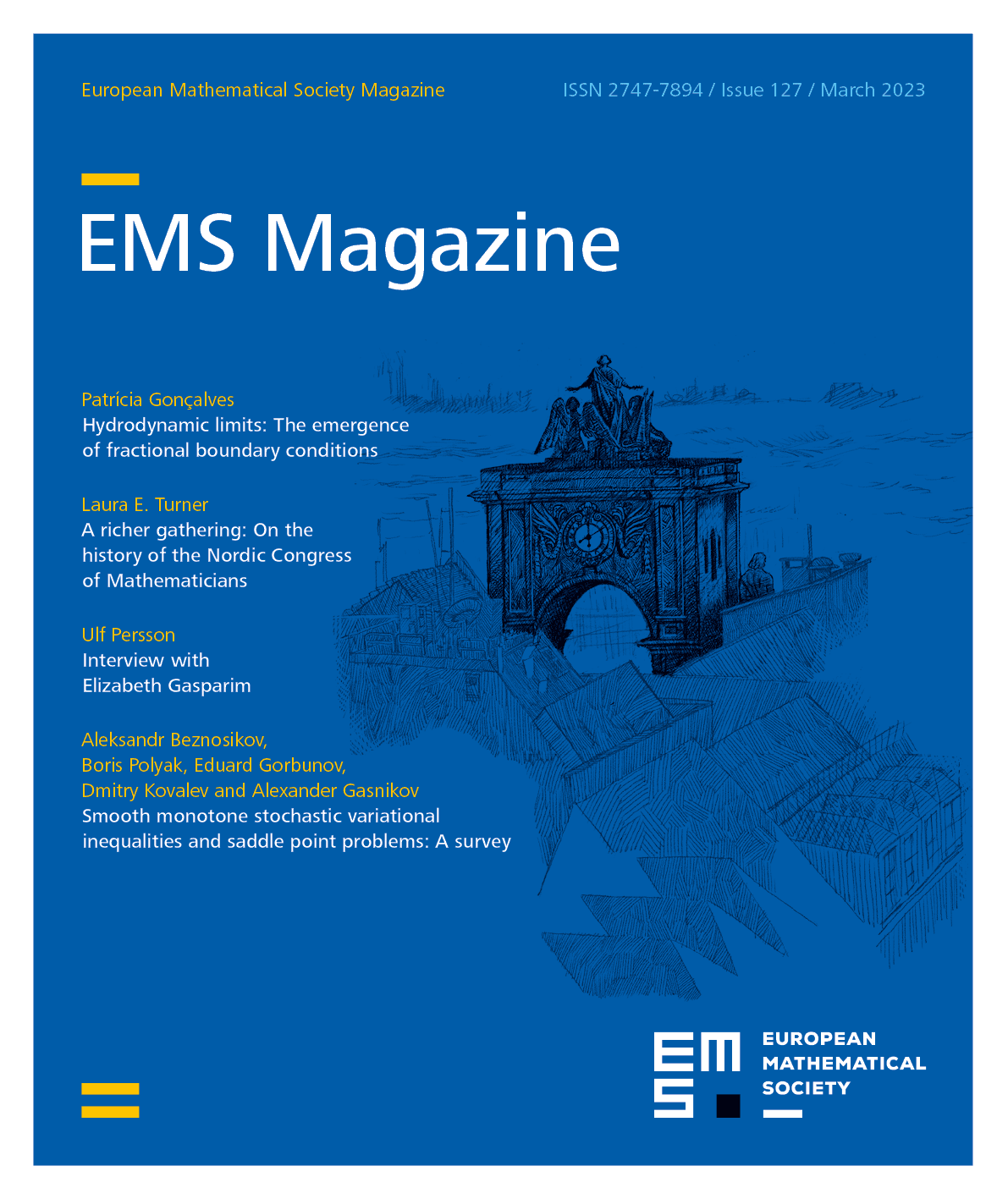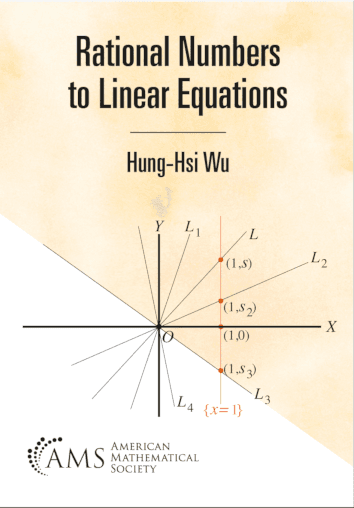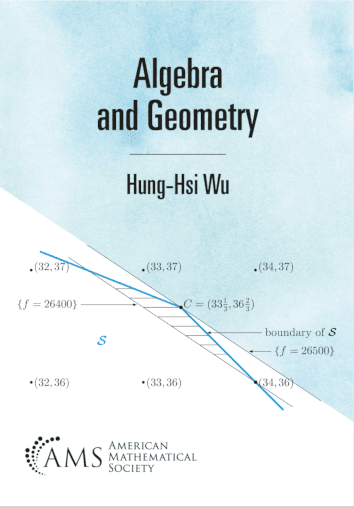All rights reserved.
These are the fourth and fifth books in a series of six covering the K-12 curriculum, as an instrument for the mathematical education of schoolteachers. They follow three volumes entitled “Understanding Numbers in Elementary School Mathematics”, “Teaching School Mathematics: Pre-Algebra” and “Teaching School Mathematics: Algebra”, and they are the first two of a series of three dedicated to high school teachers. Although all the topics covered in the first of the present books and many of those included in the second one have already been treated in previous volumes, the author wanted to ensure that high school teachers will have at their disposal a set of self-contained instruments for their mathematical education expressly written for them, but not neglecting the mathematical pre-requisites to what they have to teach, which include, of course, the content of middle school mathematics. The first volume starts with a systematic study of fractions, followed by rational numbers, the euclidean algorithm and the fundamental theorem of arithmetic, but with a somewhat briefer approach than in the previous volumes, adequate to high school teachers. It proceeds to the study of geometry, with the introduction of basic isometries, dilation and similarity, giving these subjects a more systematic and advanced treatment than the one adopted in the second volume of this series of six. This study of geometry is continued in the second volume considered in this review, as we shall presently see. The final chapter of the first volume deals with linear equations and their graphs, including the case of two variables, the setting up of coordinate systems, lines and their slopes, and simultaneous linear equations; it starts with general considerations on the use of symbols and symbolic expressions.
All rights reserved.
The second volume starts with the study of functions, but with a deeper discussion on the abstract concept of function and on the general purpose of studying functions than what could be achieved in the volumes dedicated to basic and middle school mathematics. Then it proceeds to linear functions of one variable, linear inequalities, and an application to linear programming with an introduction to the general problem of optimization, an appendix on mathematical induction, quadratic functions and equations, polynomial and rational functions, exponential and logarithmic functions, polynomial forms, and complex numbers, with the statement of the fundamental theorem of algebra.
The last three chapters continue the study of high school geometry. After a review of the geometric topics included in the previous volume (mainly the basic assumptions and theorems), the book proceeds with the basic theorems of plane geometry, namely, completing the study of congruence and similarity and the fundamental properties of triangles and circles, including the Euler line and the nine point circle, and some other meaningful properties, some of them proposed as exercises to the reader. This covers and goes beyond what is usually considered the content of middle and high school plane geometry, but presented here as a beautiful piece of mathematical writing with the due balance between precision and intuition that was advocated by the author since his first introduction of geometric topics in the second volume of this series. Another juicy chapter follows, in which we are first brought to understand the main ruler and compass constructions, up to the regular pentagon, and the basic ideas that explain the long story of constructibility, from antiquity to the main negative results of the nineteenth century. The final chapter is dedicated to an analysis of the axiomatic method in geometry, with a discussion that synthetizes the basic principles that presided over the presentation of middle and high school geometry in this series of books and that explains why this is the right opportunity for a more detailed approach to evaluate the choice of the set of basic assumptions that are to be accepted without proof, which is an unescapable feature of any deductive system. The author does not advocate that, until the end of high school, students should be confronted with a presentation of geometry based upon one of the known rigorous axiomatic systems that have been proposed, since the pioneering work of Hilbert and other mathematicians, by the end of the nineteenth century, freed the more than two thousand years old approach of Euclid from its flaws. Nevertheless, in this final chapter, he describes Hilbert’s system and gives some examples of basic deductions from the axioms; he also shows the consequences of replacing the euclidean parallel axiom by its negation, thus providing an introduction to neutral and hyperbolic geometry. For a discussion on the possibility of slightly different approaches to the first steps in school geometry that nevertheless should respect the general principles advocated by the author, I redirect the readers to one of my previous reviews, namely, António de Bivar Weinholtz, Book review, “Teaching School Mathematics: Pre-Algebra” by Hung-Hsi Wu. Eur. Math. Soc. Mag. 123, 52–54 (2022). I just add a comment on the choice of Hilbert’s system as the only example of an axiomatic of elementary geometry that is presented here. While this is certainly the most widely known and the pioneer in modern axiom systems that were able to “fix” Euclid’s work, I always like to give some credit to Tarski’s system, which in his most recent form (attained only in the 1960s and developed in a single monograph published in German in 1983 and, to my knowledge, nowhere else) deserves, in my opinion, much more attention than it has obtained until now. Not only Tarski’s system is of a much more synthetic nature than Hilbert’s (only “points” as primitive objects, “betweenness” and “equidistance” as primitive relations and, quite surprisingly, a list of only 10 axioms and an axiom scheme, using logic operators, including identity, which, all taken together, are in a precise sense “shorter” than only one, the “longest”, of Hilbert’s axioms), but its axioms all admit a very intuitive interpretation. I believe it could be explored—not, of course, to be taught, as such, for middle and high school students, but perhaps to inspire some alternative details in a treatment of geometry of an elementary nature.
The second volume also contains a very helpful appendix with a list of assumptions, definitions, theorems, and lemmas from the first of these two volumes.
For a general appreciation of this set of books, I strongly recommend reading first another one of my previous reviews, namely, António de Bivar Weinholtz, Book review, “Understanding Numbers in Elementary School Mathematics” by Hung-Hsi Wu. Eur. Math. Soc. Mag. 122, 66–67 (2021). Therein one can find the reasons why I deem it a milestone in the struggle for a sound mathematical education of youths. I shall not repeat here all the historical and scientific arguments that sustain this claim, but, as I did previously, I have to state that, while the volumes reviewed here are written for high school teachers, as an instrument for their mathematical education (both during pre-service years and for their professional development), and to provide a resource for authors of textbooks, the set of its potential readers should not be restricted to those for which it was primarily intended; I once again claim that it should include anyone with the basic ability to appreciate the beauty of the use of human reasoning in our quest to understand the world around us and the capacity and will to make the necessary efforts required here as for any enterprise that is really worthwhile. Of course, as the content and presentation of the three last volumes is of a more advanced nature, it requires from the reader a wider set of pre-requisites.
Both volumes are punctuated with pedagogical comments that give extremely useful advice regarding what content details should be used in classrooms and which are essentially meant to teachers; mathematical comments are also added to the main text, in order to extend the views of the reader whenever it helps to clarify the subject in question. People interested in the full scope of the pedagogical comments of these two volumes are referred also to my book review of “Teaching School Mathematics: Algebra” by Hung-Hsi Wu. Eur. Math. Soc. Mag. 125, 50–52 (2022), where a detailed description is made of what the author considers to be the main characteristics of mathematics and how they have been neglected in schools for such a long period of time and replaced by what he calls “Textbook School Mathematics” (TSM); the same concern is present in all the topics treated in the two volumes reviewed here.
As it is almost inevitable in any printed book, there are some minor misprints that can be easily detected and corrected by the reader. I just point out a detail in the formal definition of a function : the author only refers that it is defined as a set of ordered pairs with and with the additional property that if both and are elements in this set, then . As the author does not advocate that such a formal definition should be taught to high school students, it is of no practical importance for classroom use to discuss if the formal definition should be completed with some other requirements, if one wants it to reproduce all the features that one usually associates with functions with a specific domain and “target set”. Nevertheless, it is perhaps relevant to note that, for the function to have as its domain, one should add that, for each , there is an such that is in the set. Moreover, if one wants to define “surjectivity” as an intrinsic property of a function or, in general, distinguish the set from the “image set” of the function, then one has, in one way or another, “to add” the set to the definition, distinguishing the function itself from its “graph”; for instance, this can be done by defining the function as an ordered triple where the first and second elements are the sets and the third (the “graph of the function”) is a set of ordered pairs with the two properties stated above. One could replace the triple by a pair, eliminating the set in the definition and reducing the property of the graph to the one stated by the author, as one could then just add that is the set of the first coordinates of the pairs in the graph, but the set cannot be defined just by examining the graph. All these “subtleties” should not, of course, be brought to a high school classroom, although they can be of some use to teachers.
Also with respect to high school math, I have to state that, with this set of books at hand, there is no excuse left for schoolteachers, textbook authors and government officials to persist in the unfortunate practice of trying to serve to students this fundamental part of school mathematics in a way that is in fact unlearnable …
As in the previous volumes of this series, on each topic, the author provides the reader with numerous illuminating activities and an excellent choice of a wide range of exercises.
Hung-Hsi Wu, Rational Numbers to Linear Equations, American Mathematical Society, 2020, 402 pages, Paperback ISBN 978-1-4704-5675-7, eBook ISBN 978-1-4704-6004-4.
Hung-Hsi Wu, Algebra and Geometry, American Mathematical Society, 2020, 375 pages, Paperback ISBN 978-1-4704-5676-4, eBook ISBN 978-1-4704-6005-1.
Cite this article
António de Bivar Weinholtz, Book review: “Rational Numbers to Linear Equations and Algebra and Geometry” by Hung-Hsi Wu. Eur. Math. Soc. Mag. 127 (2023), pp. 63–65
DOI 10.4171/MAG/126

